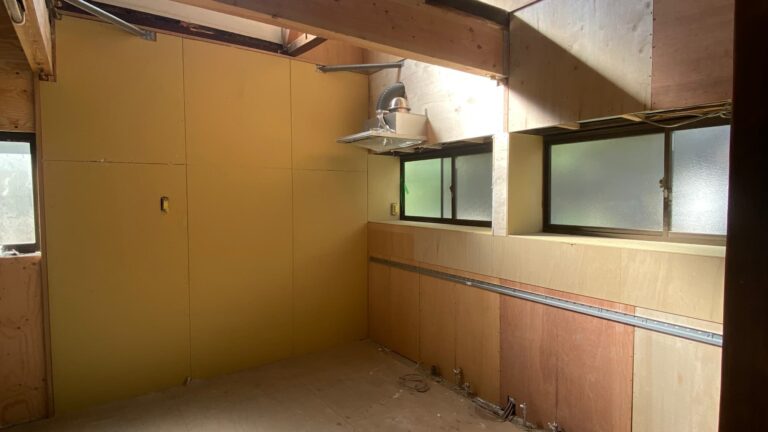Navigating uncertainty: China’s housing market adapts to evolving global trade dynamics
Escalating US tariffs are expected to strain China’s slowing economic growth and dampen buyer confidence, hardening challenges for the country’s housing market

At first glance, there appears to be little connection between fentanyl, the synthetic opioid fueling a public health crisis in the United States, and China’s real estate sector.
However, as US President Donald Trump advances his second-term policy priorities, his administration has tied stricter trade measures to Beijing’s perceived role in the opioid epidemic. This has ignited a second round of the trade war, with potentially severe consequences for China’s already fragile housing market.
In early March, the White House announced an additional ten-percentage-point increase in tariffs, bringing some rates on Chinese goods to 45 percent. This followed similar tariff hikes imposed just 12 days into Trump’s second term. The president has indicated that tariffs on Chinese exports could climb as high as 60 percent unless Beijing takes concrete steps to curb fentanyl shipments to the US.
While neither country has introduced policies directly impacting their respective housing markets, the ripple effects of a weakened Chinese economy are expected to place additional pressure on a real estate sector already suffering from low buyer confidence and an oversupply of properties.
“Historically, weaker consumer sentiment translates into more cautious spending on big-ticket items like cars and homes,” says David Zhang, an analyst at Trivium, a firm specialising in China policy with offices in Beijing and Shanghai. “While tariffs don’t directly impact the property sector, the secondary effects on China’s economy could weigh on household income and consumer confidence, especially if exports and manufacturing slow down.”
After achieving five percent GDP growth in 2024, economists now project that China’s economy will slow to between four and 4.6 percent this year, with further deceleration expected in 2026. The extent of this downturn will largely depend on the severity of future US tariff hikes.
According to the Economic Intelligence Unit, the current 20 percentage-point tariff increase could reduce China’s GDP growth by 0.6 percentage-points annually through 2027. In a worst-case scenario, where US tariffs reach 60 percent, GDP growth could decline by a significant 2.5 percentage-points over the same period.
While tariffs don’t directly impact the property sector, the secondary effects on China’s economy could weigh on household income and consumer confidence, especially if exports and manufacturing slow down
UBS, in its analysis of a potential 60 percent tariff scenario, has projected that China’s GDP growth will slow to just four percent this year and three percent in 2026. If these forecasts materialise, China could experience its weakest economic performance in decades, aside from the immediate aftermath of the pandemic. The resulting decline in consumer income, confidence, and spending would have inevitable consequences for the housing sector.
As US tariffs squeeze external demand, the Chinese government may prioritise boosting domestic consumption to offset economic losses.

“Given the impact of tariffs on external demand, boosting domestic demand takes priority,” says Vicky Xiao Zhou, a Greater China macroeconomist at ANZ in Hong Kong. “We don’t expect an external shock to change China’s domestic fundamentals.”
Beijing’s unexpected intervention in January to support the heavily indebted property developer Vanke suggests that policymakers may adopt a more flexible approach to managing the property sector and the broader economy.
China’s annual parliamentary meetings, led by President Xi Jinping, began in early March— coinciding with the US announcement of increased tariffs. During these meetings, known as “the Two Sessions,” Beijing is expected to unveil new GDP growth targets. Policymakers face the challenge of sustaining the official growth target of approximately five percent amid mounting economic pressures.
“Beijing could respond with more aggressive stimulus if the trade situation worsens,” says Zhang of Trivium. “We’ve already seen numerous targeted measures aimed at stabilising the property market, and a prolonged trade conflict could push policymakers to expand demand-side support. This could include subsidies for firsttime buyers, lower mortgage rates, or even direct fiscal transfers to boost consumption.”
China’s central bank has signalled its intention to continue lowering interest rates “at the proper time” as it navigates the dual challenges of a weakening yuan and slowing economic growth. Many economists expect the next rate cut as soon as March, following reductions in late 2024 aimed at achieving last year’s GDP targets.
Lower interest rates would lead to cheaper mortgages, which could help improve homebuyer sentiment. However, despite modest gains in property prices, significant structural challenges remain.
In January, new home prices in China’s largest cities rose by an average of 0.36 percent, the most substantial increase in months. Yet developers continue to grapple with high debt levels and excessive housing inventory, limiting the prospects for new construction in the near term.
Despite the inevitable impact of US tariffs on the broader economy, some experts argue that China’s real estate sector faces deeper, more fundamental problems.
“China’s property sector is facing more fundamental and long-term challenges beyond the impact of tariffs,” says James Macdonald, head of China research at Savills. “Oversupply across key sectors, coupled with weak domestic demand and consumption, remains the more pressing concern.”
While US trade policies will certainly influence China’s economic trajectory, the country’s real estate sector must contend with structural imbalances that predate the current tensions. Until these deeper issues are addressed, the housing market is unlikely to see a sustained recovery, regardless of fluctuations in trade policy.
The original version of this article appeared in PropertyGuru Property Report Magazine Issue No. 189 on issuu and Magzter. Write to our editors at [email protected].
Recommended
ARES Whitepaper Volume 4: Powering communities – The catalysts of urban evolution
Fresh perspectives on sustainability, lifestyle, and design shaping the future of real estate
ARES White Paper Volume 3: The era of adaptive reinvention
Pioneering sustainable and innovative practices in urban development
ARES White Paper Volume 2: Unravelling the power of data revolution in real estate
Insights on proptech, smart cities, and sustainable development
ARES Digital White Paper Volume 1: The fundamentals of responsible building
Green and climate heroes join forces to discuss how Asia Pacific can weather the current environmental crises and the looming effects of climate change







